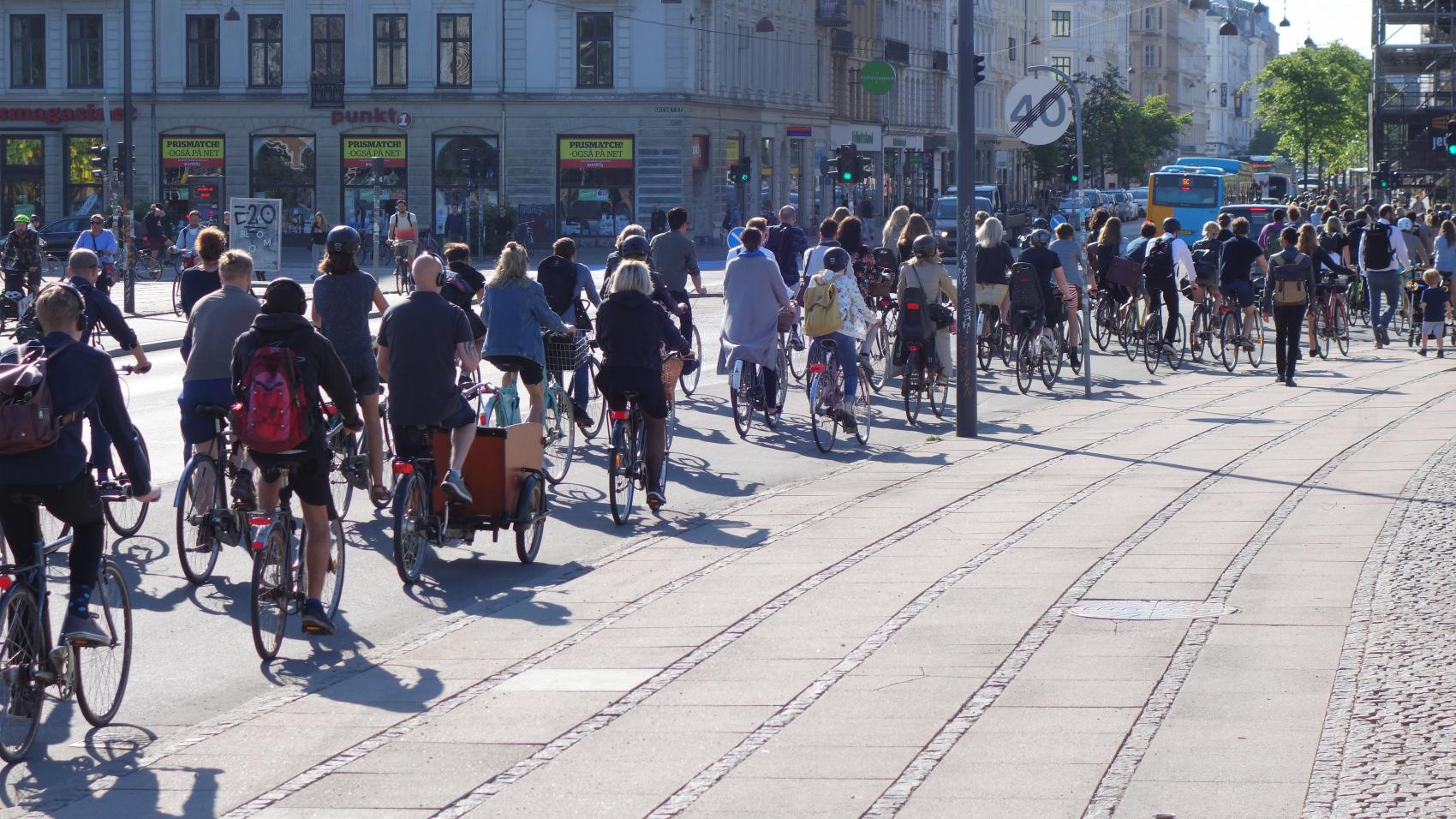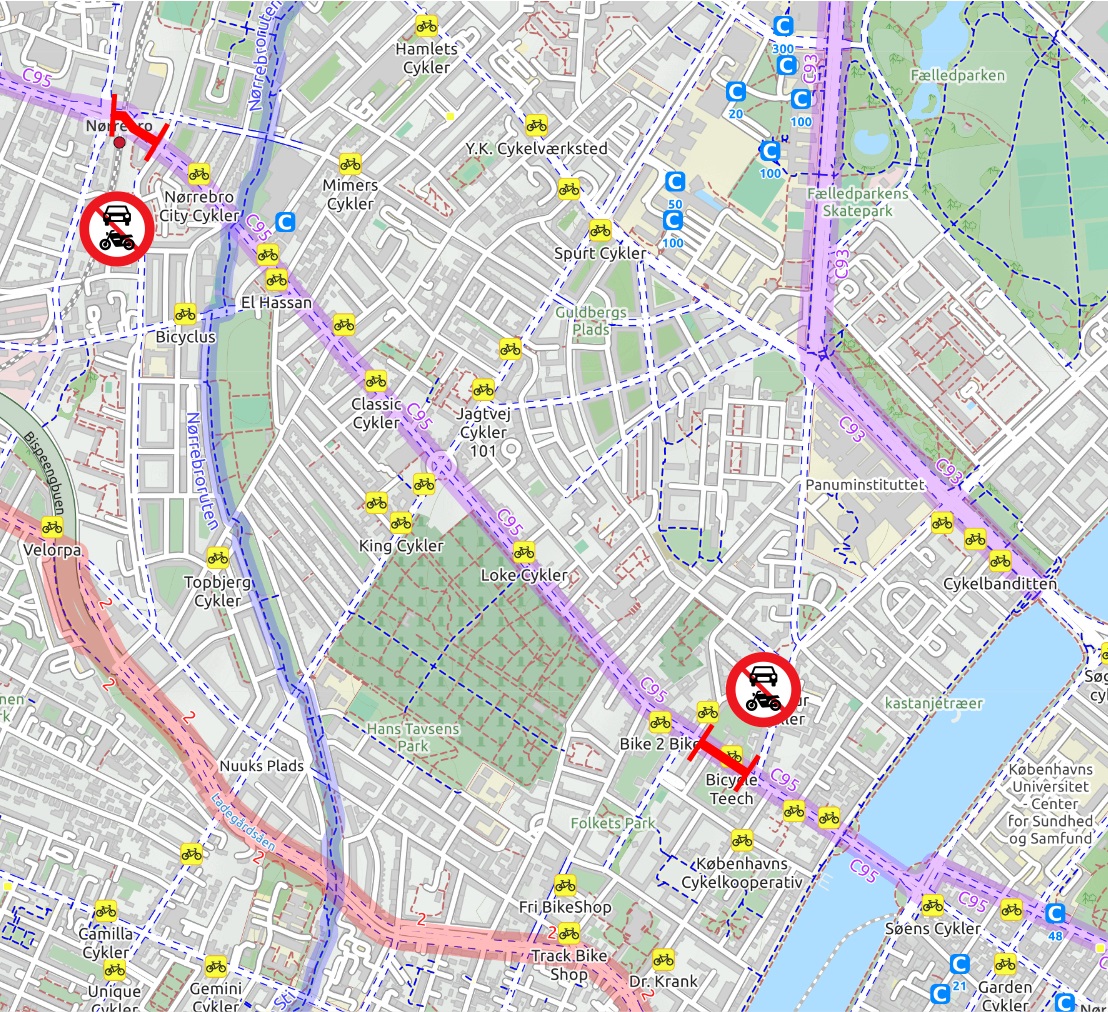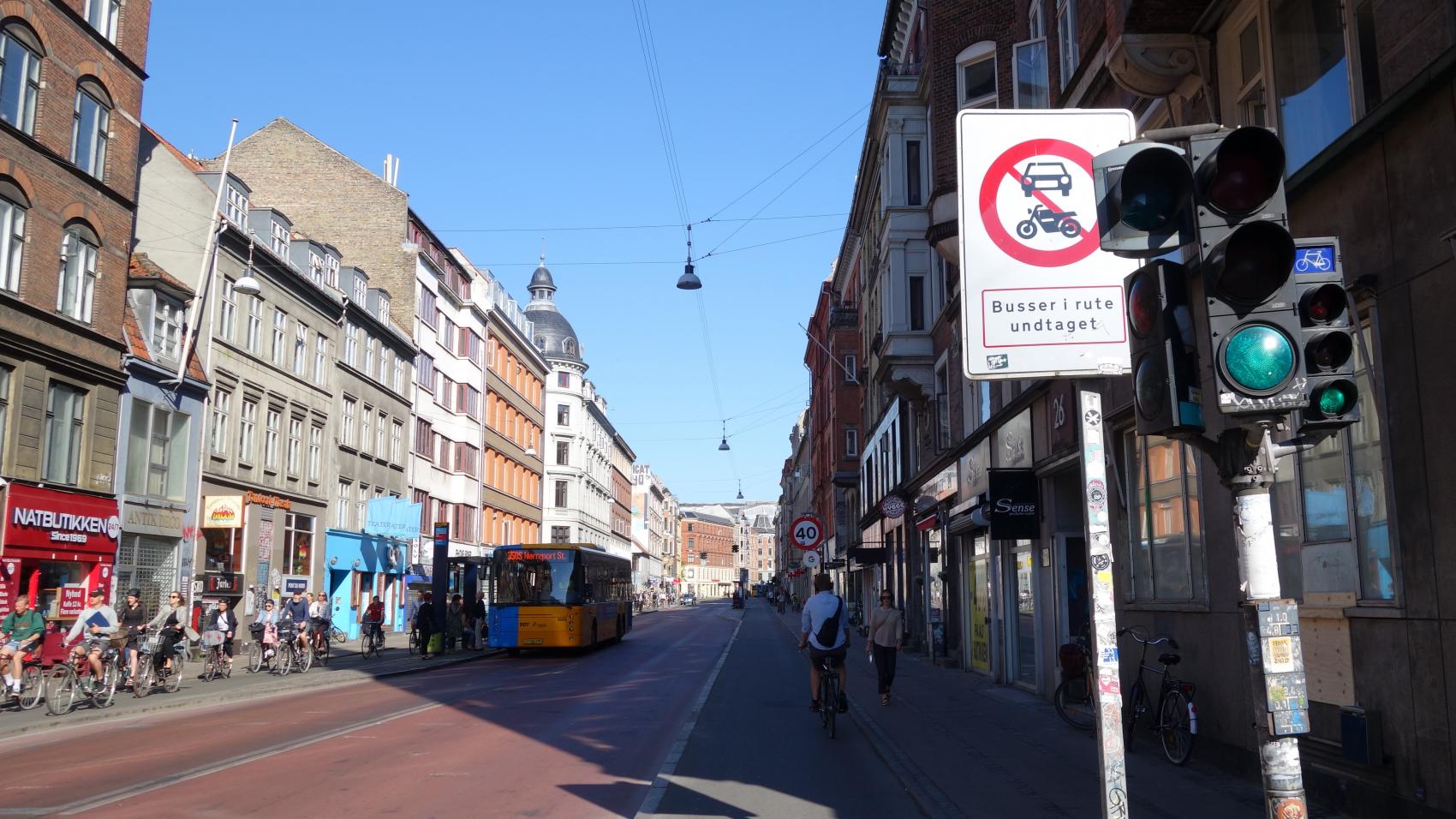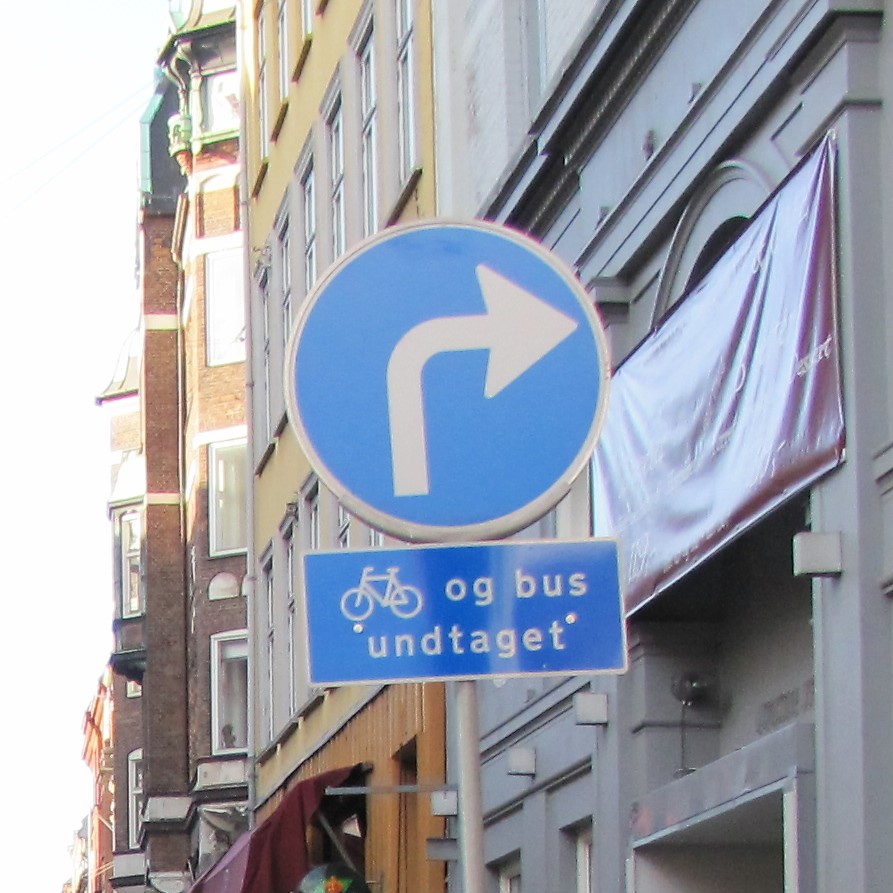
Filtered permeability on cycle highway C95 in Copenhagen
Up to 48 thousand cyclists per day cross Queen Louise Bridge in Copenhagen. One of the key measures that contributed to reaching such a high number is closing of short sections of the street leading to the bridge for motorised traffic.
Nørrebrogade (North Bridge Street) is a continuation of road number 211 from Frederikssund into the centre of Copenhagen. It is also a busy shopping street and a part of cycle superhighway C95, bringing in cycle traffic from north-western suburbs up to Farum, 20 km away. The street ends at Dronning Louises Bro (Queen Louise Bridge), which have become the busiest section of cycle network in Copenhagen. As much as 48 thousand cyclists per day were counted in autumn of 2016!

One of the key measures that contributed to the success of Nørrebrogade is filtered permeability. Cars and motorcycles are “filtered out” on two short sections of Nørrebrogade (between Borgmestervangen and Nordre Fasanvej next to the Nørrebro train station, and 2 km further, between Elmegade and Fælledvej). Those section are closed to all motorised traffic apart from busses. Housing and businesses along the street can still be reached by car, but the whole route became unattractive for through traffic. This greatly reduced the volume of motorised traffic and improves conditions for walking and cycling.

There are two important differences between the case of Nørrebrogade and the filtered permeability we described before, on Quietway 1 in London or on Batavierenpad Zuid in Beuningen.
- Nørrebrogade is a bigger road, and not only a part of a cycle highway, but also an important public transport corridor. Therefore, not only bicycles and pedestrians, but also busses can pass through. Thanks to filtered permeability busses are not stuck in traffic jams.
- Because of significant bus traffic, there is no physical barrier preventing cars from entering the closed sections. While some cities, like Nijmegen or Zutphen use retractable bollards to control access to sensitive areas, Copenhagen is depending on respect for and enforcement of traffic rules.


The article is a part of a series showcasing examples of cycle highways infrastructure in North-Western Europe. In the next articles we will come back to Nørrebrogade to take a closer look at the traffic light programs and how the cycle paths were widened to accommodate growing traffic. More about cycle highways in Copenhagen: http://supercykelstier.dk/english/
Regions:
Network/Project Involved:
Contact the author
Recent news!
Upcoming events
Contact Us
Avenue des Arts, 7-8
Postal address: Rue de la Charité, 22
1210 Brussels, Belgium









